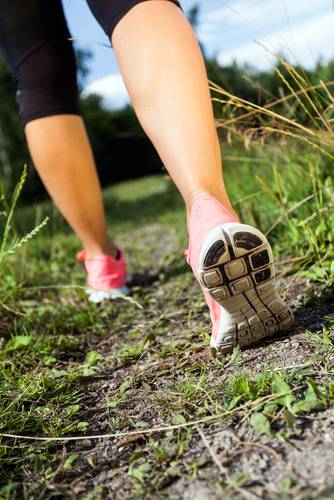“Now shall I walk or shall I ride?
‘Ride,’ Pleasure said;
‘Walk,’ Joy replied.”
-William Henry Davies
Originally I titled this article “Walking: The Most Underrated Exercise of the 21st Century,” but I changed my mind. True, doctors may prescribe walking as ‘exercise’ and there are many walking programs out there. But as Thoreau wrote in his essay “Walking” – his most-read lecture, in fact – walking is different:
…the walking of which I speak has nothing in it akin to taking exercise, as it is called, as the sick take medicine at stated hours – as the Swinging of dumbbells or chairs; but is itself the enterprise and adventure of the day. If you would get exercise, go in search of the springs of life. Think of a man’s swinging dumbbells for his health, when those springs are bubbling up in far-off pastures unsought by him!
That’s what I’m talking about. It strikes me that we don’t really do it anymore.
In a paper entitled “Achieving Hunter-gatherer Fitness in the 21st Century: Back to the Future,” Loren Cordain and associates examine the daily activities of hunter-gatherer tribes. Here are a few of the findings that illustrate the stark contrast between our modern walking habits and those of our ancestors:
- “A large amount of background daily light-to-moderate activity such as walking was required. Although the distances covered would have varied widely, most estimates indicate average daily distances covered were in the range of 6 to 16 km (approximately 3.7 – 9 miles).”
- “Women, usually in groups, spent hours walking to and from sources of food, water, and wood. Additionally, these forager women were often carrying their children for extended distances as well. Anthropologists have estimated that the typical hunter-gatherer mother carried her child until about age 4 years, covering upwards of 4,800 km with the child in her arms over this period of time.”

Let’s contrast this with the typical American. In 2003 a study of over a thousand Americans measured how much the average adult walks over a 24-hour period. The study found that the average number of daily steps was 5,340 for men and 4,793 for women. The technical definition of ‘sedentary’ is less than 5,000 steps per day. Compare that to the Australians, who walk a near-ideal average of 9,695 steps per day, or to the Amish farming communities, where the average number of steps is 18,000 for men and 14,000 for women.
The fact that walking has gone from a basic human movement we perform to get to point A to point B to a form of exercise suggests that it is, in fact, being “engineered out of existence,” as described in Tom Vanderbilt’s fascinating article, “The Crisis in American Walking.” In the meantime, there’s no doubt that some of the more pressing health concerns of modern times are related to the sedentary lifestyle. Here are just a few of the studies I found supporting the health benefits of frequent walking:
- In a 2003 metanalysis of 24 randomised controlled trials of walking tests, “Random effects modelling showed that walking interventions increased VO2 max and decreased body weight, BMI, percent body fat and resting diastolic blood pressure in previously sedentary adults (p < 0.05 for all).”
- A 2006 analysis of subjective symptoms related to mood and nervous function found that “daily walking can improve mood states and shift autonomic balance to parasympathetic predominance, and may consequently contribute to the reduction of subjective symptoms.”
- A 2007 study found that regular brisk walks lowered the risk of type 2 diabetes. For patients who already have type 2 diabetes, a 2005 study found that regular walks has significant long-term benefits.

These studies have led doctors to prescribe walking for individuals with certain health issues. As a personal trainer working with pregnant women, I always advise daily walking, just as much as I recommend strength training, swimming, or any other exercise commonly promoted during pregnancy. But I have to say, every time I make that recommendation, and every time I talk myself into taking a walk, I realize how absurd the whole thing is. Vanderbilt expresses this perfectly:
…the idea that that we, this species that first hoisted itself into the world of bipedalism nearly 4 million years ago – for reasons that are still debated – should now need “walking tips,” have to make “walking plans” or use a “mobile app” to “discover” walking trails near us or build our “walking histories,” strikes me as a world-historical tragedy.
Just go outside and walk every day. It’s that simple. Don’t time yourself, don’t count your steps, don’t monitor your heart rate – just meander, or ‘saunter,’ as Thoreau liked to call it. But be warned: you may find “there comes . . . a longing never to travel again except on foot.”
References
1. D. Bassett, et al. Pedometer-Measured Physical Activity and Health Behaviors in U.S. Adults. Medicine & Science in Sports Exercise, 42.10
2. M. Murphy, et. al. The effect of walking on fitness, fatness and resting blood pressure: A meta-analysis of randomised, controlled trials. Preventive Medicine, 44.5
3. S. Sakuragi and Y. Sugiyama. Effects of Daily Walking on Subjective Symptoms, Mood and Autonomic Nervous Function. Journal of Physiological Anthropology, 25.4
Photos courtesy of Shutterstock.






